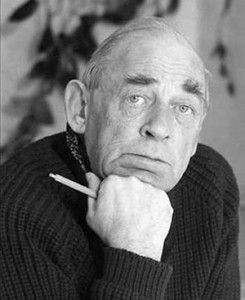

For our new blog category about the world of children’s playhouses, we start with one of the masters of modern architecture, who worked perfectly materials like wood.
The Finnish architect and designer, Alvar Aalto (1898-1976), is considered to be one of the most important architecture figures of the early twentieth century, which is a period defined by representativeness and characteristics that made buildings and their furniture designs exude both functionalism and warmth.
Alvar Aalto graduated from the Polytechnic School of Helsinki and began to distinguish himself with his early work, such as the library Viipurii and the sanatorium Paimio, because of the attention he gave to detail. This enabled him to control the space, which in turn allowed him to create his own identifying features and incorporate a high degree of functionality to suit those necessary. His overall design concept was not limited to the building itself, but also encompassed the furniture within.
These furniture pieces eventually became known due to their own relevance, subsequent to the founding of the Artek company, ), through which his wife, Aino Aalto, began to design and manufacture independent collections. All of the pieces emphasize the use of plywood as the most frequently-used material, which is in line with Alvar Aalto’s architectural work. Out of all of his furniture, the chair Paimio, designed for the sanatorium in 1932, and the circular stackable stool, are the most recognizable. The popularity of his pieces increased as a result of their organism-like forms, the use of warm materials and the functional features that made his pieces easy to produce, which in turn set a trend in design that has survived even until today.
Shortly after founding the company, Aalto created one of his best known works, the vacation home for Mairea Gullichsen, another architect, in 1938. It was a combination of both of their knowledge and therefore a combination of two antagonistic concepts. The various rooms in the house were the result of the stark contrast of the artificial and the natural, in an interaction of shapes and textures. Villa Mairea helped Aalto to gain the support of the local culture with the most advanced modern style of his time implemented in a serene harmony, which laid the foundation for future career development.
During World War II, Alvar Aalto worked as an architect and professor at the Massachusetts Institute of Technology (MIT) in the United States. His reputation as an architect continued to grow, reaching its peak with the Finnish Pavilion for the World Expo 1939 in New York. He displayed great skill through his versatile use of wood and his technical ability to join the spaces, and he was a representative symbol of the building tradition of his country. As a well-known architect, he created the effect of organic movement in the large exhibition hall, which was a defining image of the Finnish landscape. Its innovative design and brilliant execution received the accolades of another great master architect, Frank Lloyd Wright, who saw Alvar Aalto as a genius to discover.
After his brief stay in the United States, he returned to Finland to lead the Office of Reconstruction after the World War, which led to the realization of another one of his most significant works: the City of Säynätsalo. The Mairea village wood paneling had articulated sequence spaces throughout the city hall and brick was chosen as the leading material, forming the diverse volumes of the different materials around an open cloister, on which stood the council room.
This project led to the creation of even more public buildings of great importance by Alvar Alto in Finland, extending the work of Alvar Aalto projects until his death in 1976. His works were finished by his second wife, also an architect, Elissa Mäkiniemi.
Both in his buildings and his designs, Alvar Aalto highlighted the merge between tradition and modernity, along with the need to find wellness through the adaptation of spaces. This idea, and his life, may be summed up in these words: „Making architecture more human means making better architecture.“

Säynätsalo city hall



Leave a Reply